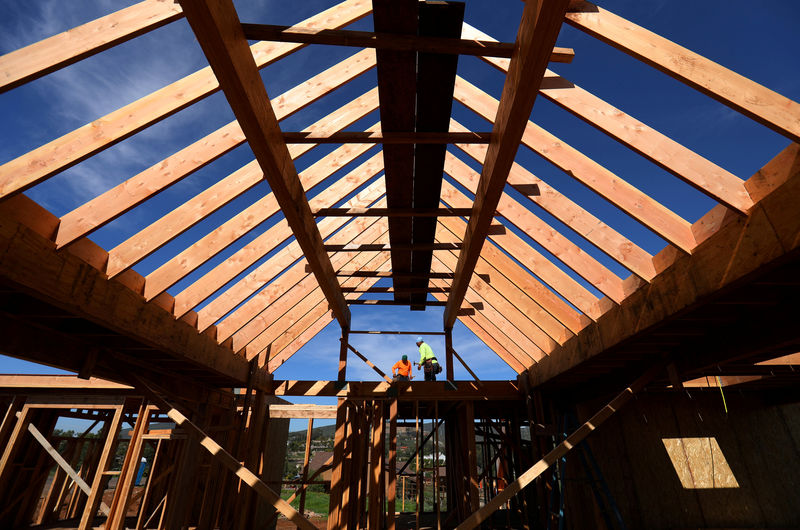By Lucia Mutikani
WASHINGTON (Reuters) - U.S. manufacturing production recorded its biggest increase in more than three years in April, bolstering the view that economic growth picked up early in the second quarter despite a surprise decline in homebuilding.
The broad strength in factory output reported by the Federal Reserve on Tuesday added to labor market data in suggesting the growth slowdown in the first quarter was temporary. That may allow the U.S. central bank to raise interest rates next month.
"The sharp increase in industrial activity is a clear sign that the first-quarter sluggishness is behind us. It comes at the right time as home construction seems to have hit a lull," said Joel Naroff, chief economist at Naroff Economic Advisors in Holland, Pennsylvania.
Manufacturing production jumped 1.0 percent last month, the biggest increase since February 2014, after falling 0.4 percent in March, the Fed said. The surge, which outstripped economists' expectations for a 0.3 percent gain, reflected a 5.0 percent rebound in the production of motor vehicles and parts.
There were also healthy increases in the output of machinery, fabricated metal products, appliances and furniture, business equipment and chemical products.
Manufacturing accounts for about 12 percent of the U.S. economy. Its recovery following a prolonged slump is being driven by a revival of the energy sector, which is spurring demand for machinery and other equipment.
Mining output increased 1.2 percent in April, contributing to the overall jump in industrial production. Industrial output has now increased for three straight months.
The dollar hit a six-month low against the euro while prices of U.S. government debt rose. U.S. stocks were flat as investors reacted to reports that U.S. President Donald Trump disclosed highly classified information to Russian officials last week.
HOUSING LOSING MOMENTUM
In a separate report on Tuesday, the Commerce Department said housing starts dropped 2.6 percent to a seasonally adjusted annual rate of 1.17 million units, the lowest level in five months, hurt by persistent weakness in the construction of multi-family housing units.
Groundbreaking activity was also held down by a modest rebound in the construction of single-family homes. Economists had forecast groundbreaking activity rising to a rate of 1.26 million units last month.
Homebuilding increased 0.7 percent on a year-on-year basis. Building permits fell 2.5 percent in April.
While the weakness in residential construction implies a slowdown in homebuilding investment, the Atlanta Fed is forecasting gross domestic product increasing at a 4.1 percent annualized rate in the second quarter.
The economy grew at a pedestrian 0.7 percent pace in the first three months of 2017.
Demand for housing remains underpinned by a tightening labor market, characterized by an unemployment rate at a 10-year low of 4.4 percent. A survey on Monday showed homebuilders' confidence rose in May amid bullishness about sales at the current time and over the next six months.
The underlying strength in the housing market helped Home Depot Inc (N:HD), the No. 1 U.S. home improvement chain, to report a higher-than-expected quarterly profit and same-store sales on Tuesday.
Home Depot and smaller rival Lowe's Cos Inc (N:LOW) have remained a bright spot in the retail sector as a firming economy and higher wages drive new home sales and a rise in the value of existing houses spurs remodeling activity.
Single-family homebuilding, which accounts for the largest share of the residential housing market, rose 0.4 percent to a pace of 835,000 units last month, failing to recoup all of March's 5.1 percent decline.
Starts for the volatile multi-family housing segment dropped 9.2 percent to a pace of 337,000 units. Multi-family starts have declined for four straight months, suggesting that rental increases have probably peaked.
Homebuilders are failing to take advantage of a chronic shortage of properties for sale amid complaints about expensive building materials and shortages of lots and labor.

"Homebuilding still requires manual labor as a key input into the production process," said Mark Fleming, chief economist at First American. "While the need for manual labor may be changing or declining in other industries, it's very hard to build a home without construction workers."